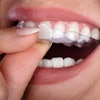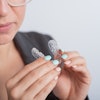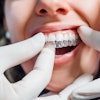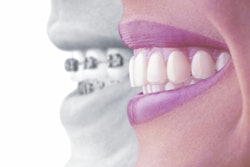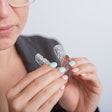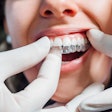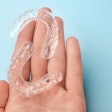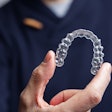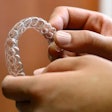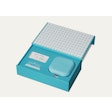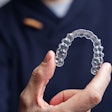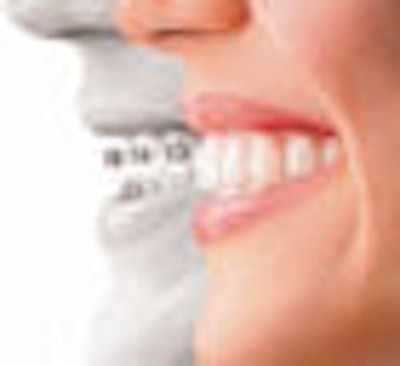
Working with Invisalign seems clear enough. Most orthodontic patients prefer a smile full of translucent plastic to the glint of metal. And a lot of the work on each case is done by Align Technology, the company that makes the device.
So does it work?
Yes -- but with only 41% accuracy. So concluded the authors of a study published in this month's American Journal of Orthodontics and Dentofacial Orthopedics (January 2009, Vol. 135:1, pp. 27-35).
"Invisalign is very good for easy cases," said lead author Neal Kravitz, D.M.D., M.S., who teaches orthodontics at the University of Maryland and practices in South Riding, VA. "I don't think it's good for challenging cases."
A dentist using Invisalign makes a single impression of the patient's teeth, then sends it to Align. Technologists at the company use CAD/CAM software to make a set of clear plastic retainers that move the teeth successively closer to the desired positions.
To test the accuracy of the system, Dr. Kravitz and his colleagues compared the final positions of 401 anterior teeth to the positions predicted by the software. Overall, they found that the teeth achieved a mean of 41.1% of the predicted motion.
The accuracy varied depending on the tooth and the desired movement. The most accurate movement was lingual constriction, at 47.1%. The least accurate was extrusion, at 29.6%. Rotation of a canine was particularly chancy, with only about 33% accuracy.
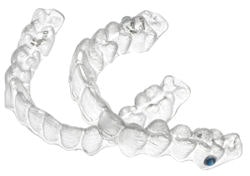 |
| Image courtesy of Align Technology. |
By contrast, Dr. Kuncio said, conventional brackets and wires typically achieve about 90% of the predicted movement. Lingual braces are gaining in popularity because they can sometimes combine the accuracy of conventional brackets and wires with the aesthetics of Invisalign, he said.
Invisalign is useful in achieving very small movements. "If your goal is 100%, you have to reimpression and do it two or three times," Dr. Kuncio said. "You have to experiment until you get it right." Or, in some cases, you can overcorrect, he added.
Dr. Kravitz emphasized that Align isn't necessarily exaggerating the effectiveness of its product. Align estimates that Invisalign gets within 56% of the target movement, he said, adding that may be possible for real Invisalign specialists. (Align did not respond to DrBicuspid.com's requests for comments.)
Dr. Kravitz also feels dentists should not give up on the clear retainers. "Invisalign is a good product. If you need to extrude a lateral or rotate a canine, that's OK -- just make sure your patients know that those movements have very little predictability."
Also, knowing the product's limitation, dentists can plan around them. Like Dr. Kuncio, he recommended overcorrecting slightly on certain teeth. But in some cases, he noted, you might want to move the least predictable teeth last so they don't interfere with the more predictable ones. You also might want to slow down some movements.
Or you might want to add elastic and buttons. Extrusions are pretty hard to achieve with a plastic aligner alone, since it lacks the traction necessary to pull on the tooth, Dr. Kravitz noted.
And it's important to remember that "there are some movements that Invisalign just could not do," he said.
Copyright © 2009 DrBicuspid.com
